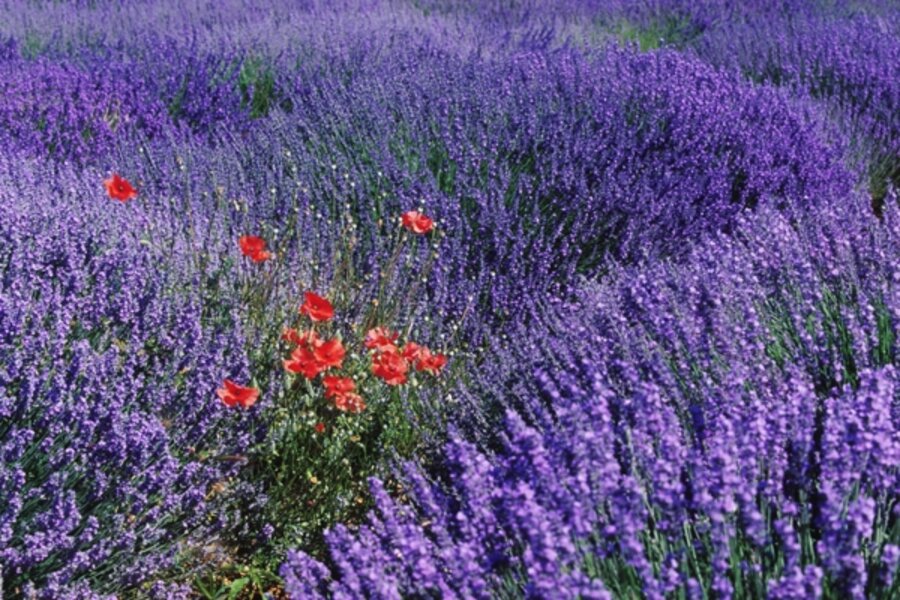The sweet charms of lavender
Loading...
Rosemary may be known as the herb of remembrance, but it is the unmistakable perfume of lavender that transports me to days gone by: a stroll through an English garden, an after-shave my dad once wore, a sleep pillow handcrafted by a neighbor.
If the evocative fragrance were its only attribute, lavender would still be well worth growing. However, scent is just the start.
Lavenders are also perfect choices for edging and low hedges, as well as accents and splashes of color throughout the garden.
Lavender is native to the Mediterranean region and has been used to perfume and cleanse for some 2,500 years.
Ancient Egyptians wrapped their dead in shrouds dipped in lavender. The Greeks thought that it deterred all manner of ills from insomnia to insanity.
Its fresh scent made it a favorite with the Romans, who used the herb extensively in bath water. Small wonder that its name comes from the Latin word lavare, which means “to wash.”
The Elizabethans scattered lavender on the floor to perfume their houses, deter insects in the linen closet, and mask displeasing odors. It was also sold on the streets of London by vendors who claimed that branches of lavender fastened to each wrist could ward off the plague.
About the same time, lavenders were used in elaborate knot gardens designed to resemble intricate embroidery designs of the day.
American colonists brought lavenders to America from England. A number of species are cultivated throughout the world, but in the United States, our best performers are English, Spanish, and French, and the lavandins (a class of lavender hybrids.)
However, not all will succeed everywhere in the country. And most American growers will never be able to duplicate the stunning photographs of four-foot-tall purplish hedges and borders we all admire in gardening books.
“Those beauties are only possible where English lavenders are truly evergreen,” notes Gene Gage of Papa Geno’s Herb Farm in Martell, Neb. After winter, “most of us are forced to trim plants back and start all over in the spring. Still, I consider lavenders a must have for every garden.”
He recommends Munstead, Hidcote, Nana, and Croxton’s Wild as the best candidates for overwintering in most of temperate America.
Mr. Gage has also had success keeping non-English lavenders alive from year to year: ”They’re not supposed to be perennials, but with plenty of mulch, they’ve made it through harsh winters in Nebraska and Wisconsin.”
While English lavender (L. angustifolia) is hardy to USDA Zone 5 and comfortable in the hot, arid areas of the West, it generally will not tolerate the steaming summers of the Deep South.
French and Spanish varieties don’t mind the humidity, but should be treated as annuals north of Zone 9, as they don’t survive temperatures below freezing.
Provence (a hybrid of English lavender) and Sweet (Lavandula heterophylla) are two varieties that have done consistently well in Southern gardens. Check with your local county or university extension agent to see which lavenders are best for your area.
No matter where you live, all lavenders require full sun, an airy location, and slightly alkaline soil.
Superior drainage is a must; otherwise the plant’s roots are likely to rot. Adding composted manure and small stones to both clay and sandy soils will help improve drainage.
Lavenders may require a little extra water during their first season, but they don’t need fertilizer. Some experts also recommend sprinkling a bit of potash around the base of each bush in the spring to heighten flower quality and color.
Spring is also the time to cut plants back hard to about eight inches high. Otherwise they’ll get lanky and woody. Then tidy up unruly branches over the growing season. Be sure to stop pruning by the first of October to give plants a chance to harden off before winter.
If you’d like to dry lavender, harvest flower stems just as they begin to open. Pick the dark-flowered lavenders when just one or two blossoms are open.
Choose a warm, dry day and cut them late in the morning – damp flower stalks can encourage mold. Hang small bunches of cuttings tied with rubber bands upside down in a well-ventilated room. Don’t allow sunlight to hit your bundles, or the flowers might fade.
Once the heads have dried, there are all sorts of ways to enjoy the harvest: Add a pinch of lavender flowers to freshly baked breads. Mix the flowers in potpourris or create your own unique sachets.
Then breathe deeply and recapture some cherished summer memories.
(Editor's note: We invite you to visit the main page of the Monitor’s gardening site , where you can find many articles, essays, and blog posts on various garden topics.)





